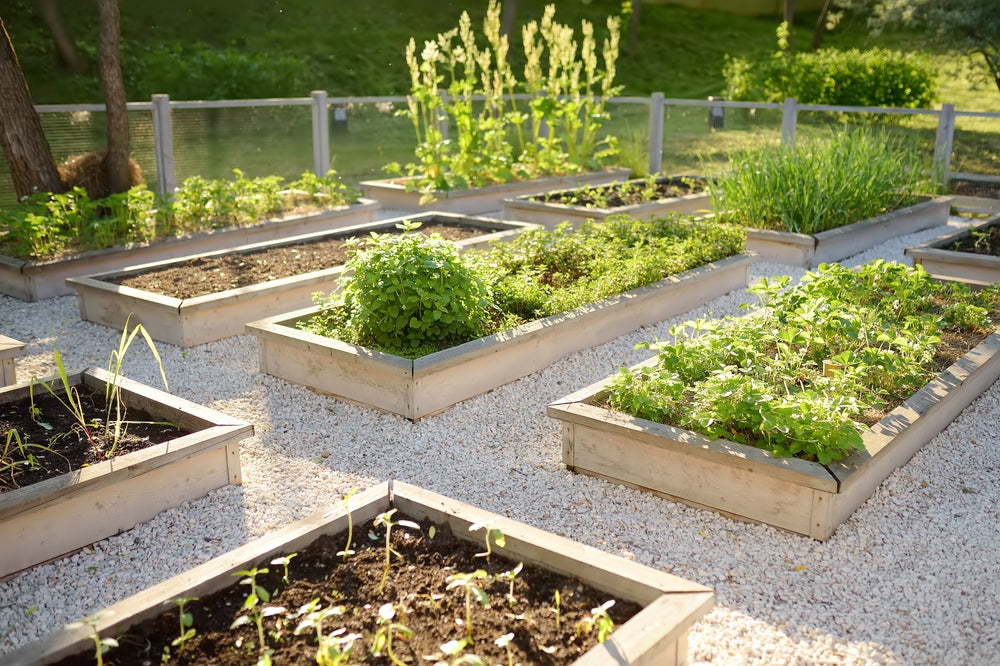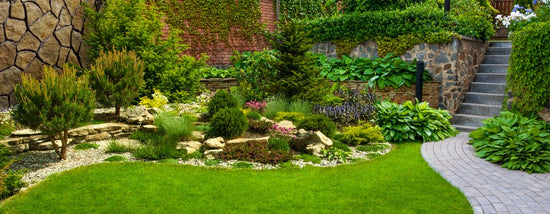Essentially, community gardening is exactly what you'd think it is when you hear the term. Community gardens are pieces of land that are cultivated, taken care of, and grown by groups of individuals or communities.
But in the wider sense of the term, let's try to understand exactly what it is. Read on to find out!
• What Is Community Gardening?

As mentioned, it is basically gardening done by a bunch of people, who - together - work toward the same goal. The land is owned more or less by anyone, but equally and by everyone.
In that land, every individual or subgroup is responsible for a separate chunk of their own space. They are responsible for the cultivation, maintenance, and care for this portion of land. But this does not mean that all the produce or harvest coming from that portion is only theirs. Why? Because it's called 'community' gardening for a reason!
Everyone gets as much right over all parts of the land and all produce belongs to each of them - meaning that they can harvest produce for their own use as and when they require.
But all individuals are required to do their part in maintaining their land and ensuring that their crops/plants are well-maintained and possibly high-yield.
These shared spaces bring people together to grow veggies, herbs, and flowers – all in one big, happy garden.
• 6 Types of Community Gardens: How Can It Be Done?
1. Allotment Gardens: Personalized Plots

Allotment gardens allocate individual plots to community members, providing them with a designated space to cultivate as they see fit. These personalized plots empower individuals to manage their own piece of greenery within the larger community garden framework.
2. Communal Gardens: Collective Cultivation
In contrast, communal gardens emphasize a shared approach. Participants collectively contribute to the maintenance and harvesting of the entire garden space. This collaborative effort fosters a sense of community and shared responsibility, making communal gardens a social hub for green enthusiasts.
3. Rooftop Gardens: Urban Oases
As urban spaces become more constrained, rooftop gardens emerge as innovative solutions. These elevated green spaces utilize otherwise unused surfaces, providing urban dwellers with an opportunity to engage in gardening activities while addressing space limitations.
4. Raised Bed Gardens: Accessibility and Convenience

Raised bed gardens are characterized by elevated planting beds. These structures offer several advantages, including improved soil drainage, reduced soil compaction, and ease of access for individuals with mobility challenges. They're a practical choice for community gardens aiming to enhance accessibility.
5. Market Gardens: Yielding Community Prosperity
Market gardens within community setups focus on cultivating produce for sale or distribution within the community. The revenue generated can be reinvested in the garden or used for community initiatives, creating a sustainable cycle of prosperity and sustenance.
6. Artistic Community Gardens: Cultivating Aesthetics
Artistic community gardens prioritize aesthetics and creativity. Incorporating sculptures, themed plantings, and artistic designs, these gardens celebrate the intersection of nature and art, contributing to a visually appealing and culturally enriching community space.
• 7 Benefits of Starting a Community Garden

1. Community Gardens for Community Building
As one of the most obvious advantages – strengthening a community ranks high when it comes to this type of gardening. Community gardens serve as focal points for social interaction. They bring people together, encouraging a sense of community and camaraderie. Collaborative gardening activities also create opportunities for neighbors to connect, share experiences, and build lasting relationships.
2. Health and Well-being
Engaging in gardening has proven health benefits. Physical exercise from tending to plants, exposure to fresh air, and the consumption of homegrown produce contribute to improved physical health. Additionally, gardening has been linked to reduced stress levels and enhanced mental well-being. So, as a community gardener, you reap benefits of brilliant social environments and therapeutic gardening.
3. Food Security and Accessibility
Community gardens contribute to local food security by providing a sustainable source of fresh produce. Participants can grow their own fruits and vegetables, reducing their reliance on store-bought items. This not only enhances food accessibility but also promotes healthier dietary choices.
Buy Vegetable Seeds
4. Environmental Responsibility

By encouraging sustainable gardening practices, community gardens contribute to environmental stewardship. Practices such as composting, water conservation, and the use of organic methods help minimize the environmental impact of gardening activities promote a more ecologically responsible approach.
5. Beautification of Spaces
The presence of community gardens enhances the aesthetic appeal of neighborhoods. Green spaces contribute to the overall beautification of the area, making it more visually pleasing and potentially increasing property values. This positive transformation can instill a sense of pride and ownership among community members.
6. Local Economy and Sustainability
Some community gardens operate as market gardens, producing surplus crops for sale within the community. This not only stimulates the local economy but also promotes sustainable agriculture practices. Reinvesting revenue generated from garden produce back into the community creates a cycle of economic and environmental sustainability.
7. Empowerment and Skill Development
Community gardening empowers individuals with a sense of accomplishment. Participants learn practical gardening skills, gain confidence in their ability to grow food, and develop a greater understanding of sustainable living practices. This empowerment can extend beyond the garden and positively impact various aspects of participants' lives.
• Community Gardener: A Green Ambassador

Being a community gardener isn't just about tending to plants. It's about fostering connections, sharing tips, and creating a vibrant green space for everyone. You might just become the neighborhood's green ambassador.
As a shared space, a community garden is a wonderful way to strengthening human connections and emphasizing on the importance of empathy in this world through sharing of resources, and self-sustenance.










